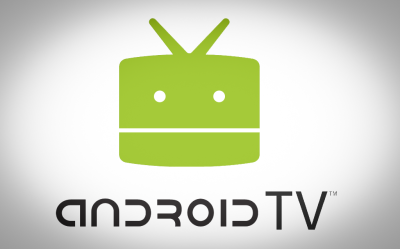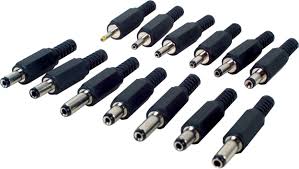Désolé, cet article est seulement disponible en Anglais Américain. Pour le confort de l’utilisateur, le contenu est affiché ci-dessous dans une autre langue. Vous pouvez cliquer le lien pour changer de langue active.
Despite numerous visits to the exhibition, this was my first time at IBC's conference - overall the quality both in terms of logistics and level of speakers was topnotch. I only caught one sales-pitch, much better than most trade shows. If you are going to choose one source, IBC is a good candidate. The only problem is that there is just too much going one to be able to focus as my notes below show. Also once the trade-show opens there's too much pull there to stay at the conference. Going the day before seems the only way for me.
Snippets from the social media session
I caught the wrap-up of the BBC speaker: we are looking to help people find other people already talking about their programs. I expect a TV station to cater to a community created around their content, but was surprised to see one so actively looking to actually create one. The beeb’s innovative attitude is impressive. I’m curious to see if they can be successful sustaining this new mindset.
Android based tablet should bring the true democratisation of tablets device for this year’s Christmas season.
The MTV guy said that talking about social media now is 6 yrs too late; I wonder what he was talking about 6 years ago.
Scheduling is recommendation by a brand you trust that is telling you “we think you’ll like to watch this content at this time”.
On BBC iPlayer navigation is still basically by channel. So maybe TV stations won’t die after all.
The Music industry is several years ahead of TV. What Spotify does with Facebook is showing the way. Facebook isn’t as much social recommendation as social validation.
Recommendation is content coming to you, whereas search is you going out to content.
Scheduled content is often the beginning of a recommendation chain. If scheduling looses its importance, how will broadcasters promote shows that are not scheduled?
Is there really wisdom in the crowd: probably not always.
It now seems clear that Social-TV will be multi-screen so connected devices are key. Who will own this value chain, Samsung or Sony Bravia have a head start in terms of brand positioning.
Social TV ain’t easy: Scandinavian broadcaster had to close down Facebook trials around football matches as tempers rose out of control.
BBC: setting up any kind of forum requires a lot of effort to manage. One can’t simply put up a system. Moderation costs will soar.
At this stage an idea came to me that shut out the talking as I wrote it dow:
Back to the future: After the Internet enabled the long tail, is recommendation, be it social or otherwise, converging back towards front catalogue. Technology under the hood might whiz obscure back-catalogue or UGC items to the forefront in a flash. But as consumers, will we live in a world that will shrink back to hundreds of choices, not the millions the Internet once promised? Ouch, it would be like going back to the middle-ages!
Back to the session:
I heard talk of many devices at the IBC 2010 conference the three that show what a wide variety are on decision makers’ minds were: iPad, the iPad and oh yes, I almost forgot: an iPad.
Cisco #fail
Alex Balfour, is the new media guy from the excitingly named LOCOG A.K.A the 2012 Olympics organisation committee. In 20 dull minutes he mentioned the name Cisco four times and their product name 3 times, the session should actually have been called Cisco & Social media. A Cisco rep took over and when this became a clear sales pitch. I left. Come on Cisco & IBC, don’t let this sort of thing happen, your better than that. Some of the most interesting speakers in the industry work for Cisco, Yes you can!
I caught the last part of a Panel on “the way forward with online video”.
US TV networks are finding that when they promote alternative distribution channels as well as main broadcast feed, there is no cannibalisation. However movies are not available outside of the main feed and TV content is only available during small windows, so as to maximise syndication etc.
Connected TV
The last session I caught on my IBC conference day was on the Connected TV chaired by David Docherty
I was disappointed at how UK centric things were in the intro to this session. The “D-Book” that was described as some sort of holly grail is actually technical specs for UK’s DTT, what’s the big deal?
Ian Fromely from NBC Universal is an entertaining speaker, he had me smile a few times, but he didn’t seem at liberty to say much of significance, or if he did, I didn’t understand.
LoveFilm
The LoveFilm lady gave the same presentation as six months ago in London. The company is basically a UK based baby-Netflix (that Amazon now wants to buy – LoveFilm that is, not Netflix Doh!). LoveFilm is 6 years old, with 1,6M customers in 5 countries but mainly UK (1,2M). The main challenge is educating customer base for the move from mail order to digital. The digital service was launched in UK may 2009. Lack of figures on digital usage leads me to assume the take-up is disappointing. But the way Netflix is transforming its 1950’s style mail order business into an online on-demand business shows that it’s easier for these companies to make the transition than it was for Blockbuster. Consuming from home seems to be more important than having a huge choice …
Google – I’m still not convinced
The GoogleTV presenter was not giving anything away. She might as well have cancelled. Oh no she gave a scoop: GTV will be launched in US before EOY 2010! Oops we know that too.
Her presentation showed just how immature Google still is in its approach to TV: he key focuss was on 5 hrs a day average viewing (hmm I though Google was global not just a US company) – 70bn$/yr ad revenues– 4 billion TV users.
She did say something that caught my attention: “TV is reliable” to which I’d add just like fixed-line phones before VoIP. If that is really a USP of the TV then a company whose products are all branded ‘beta’ for several years after launch should stay away.
The Google spokesperson went on to say that the web needs to be a natural extension of the TV. So hooking with previous remark I take it Google is going to tame the web into being well behaved and reliable.
In response to an audience question she said “Google TV will be a free open source platform” finishing off with “If anyone can scale to support explosive demands on the Web from connected TVs, Google can”. Next time she should just take questions, cause that’s the only time she said anything of interest.
My song for Samsung
Despite prohibitive roaming charges the only talk that got me to tweet during the conference was Samsung’s. I tweeted “By saying their connected TV’s aren’t about disintermediation, but about bringing value, Samsung is coming an intermediary.”
Their site www.samsungsmarttvchallenge.eu shows they mean business and sales figures got me listening: 1 set in 4 sold in Europe is a Samsung.
On the down side Samsung’s connected TV is proprietary environment, but at least it’s built on open standards.
I’m still not actually sure what got me to sit up and listen to Dan Saunders. Maybe it’s that Google and Sony are pushing in so many directions at once in the connected TV space that I’m confused and think even their staunchest supporters will be too. Apple on the other hand is very focussed, but runs closed TV shop for now.
Samsung has the mix that feels right: aggressively pushing a single way to get TV’s connected with just enough control to keep things working, and enough openness to recreate the Appstore phenomenon that put the iPhone into orbit around the sun.


